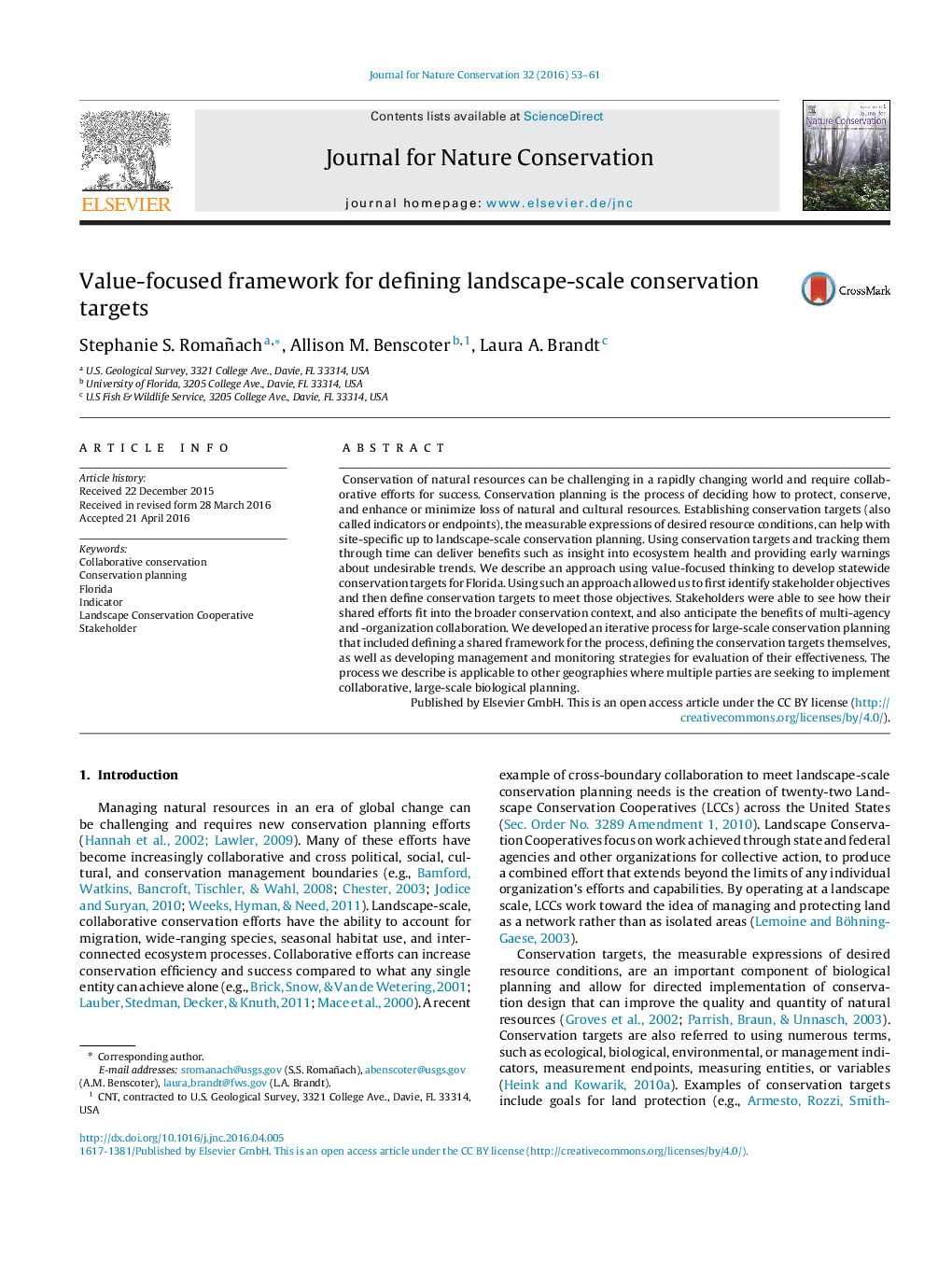| Article ID | Journal | Published Year | Pages | File Type |
|---|---|---|---|---|
| 6305397 | Journal for Nature Conservation | 2016 | 9 Pages |
Abstract
Conservation of natural resources can be challenging in a rapidly changing world and require collaborative efforts for success. Conservation planning is the process of deciding how to protect, conserve, and enhance or minimize loss of natural and cultural resources. Establishing conservation targets (also called indicators or endpoints), the measurable expressions of desired resource conditions, can help with site-specific up to landscape-scale conservation planning. Using conservation targets and tracking them through time can deliver benefits such as insight into ecosystem health and providing early warnings about undesirable trends. We describe an approach using value-focused thinking to develop statewide conservation targets for Florida. Using such an approach allowed us to first identify stakeholder objectives and then define conservation targets to meet those objectives. Stakeholders were able to see how their shared efforts fit into the broader conservation context, and also anticipate the benefits of multi-agency and -organization collaboration. We developed an iterative process for large-scale conservation planning that included defining a shared framework for the process, defining the conservation targets themselves, as well as developing management and monitoring strategies for evaluation of their effectiveness. The process we describe is applicable to other geographies where multiple parties are seeking to implement collaborative, large-scale biological planning.
Related Topics
Physical Sciences and Engineering
Earth and Planetary Sciences
Earth and Planetary Sciences (General)
Authors
Stephanie S. Romañach, Allison M. Benscoter, Laura A. Brandt,
